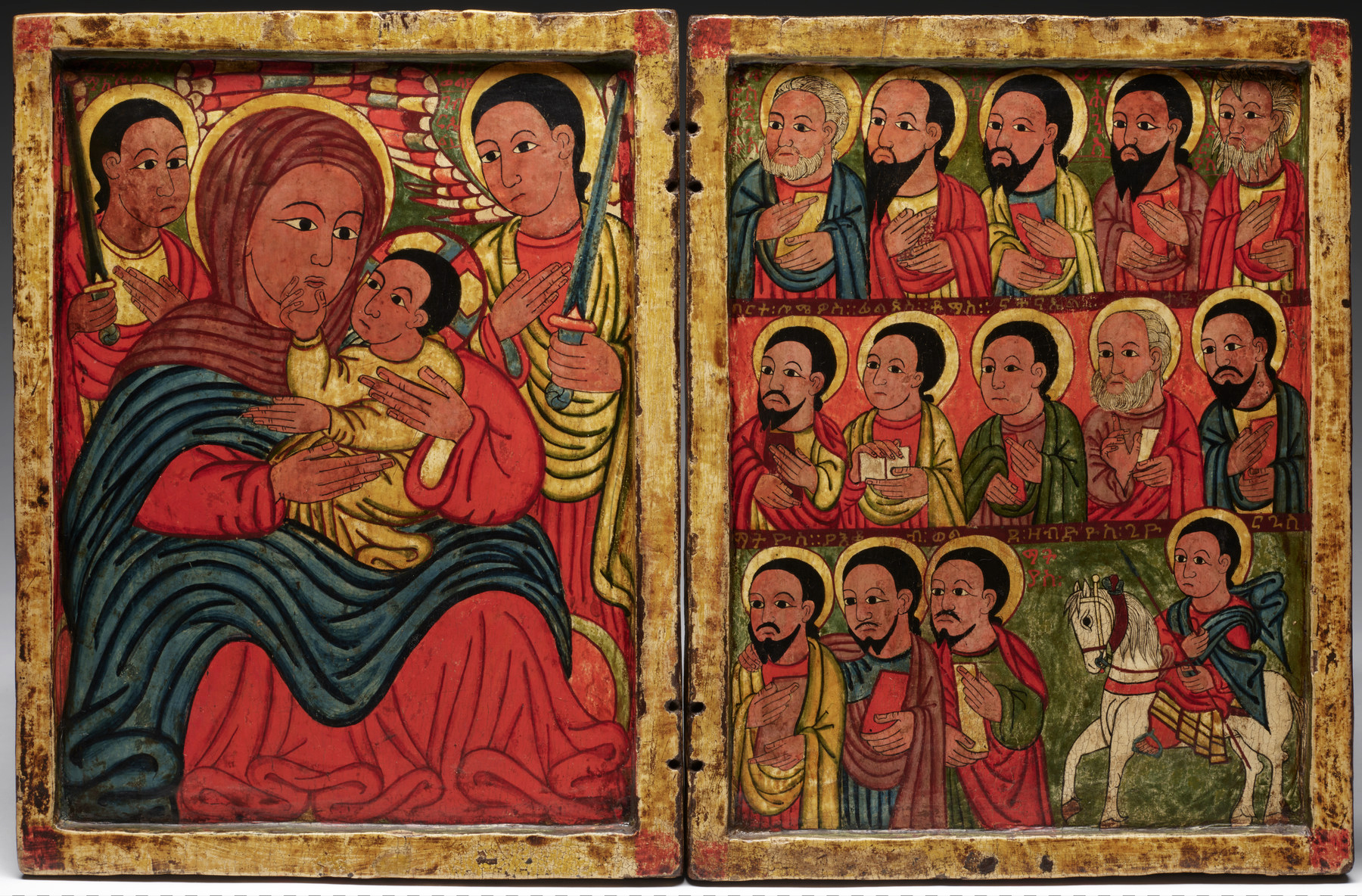NUBIAN & ETHIOPIAN CHURCH COLLECTION
The history of Christianity in Ethiopia and Nubia during the Dark Ages and Medieval period is a tale of early adoption, theological development, and cultural integration. These two regions in northeastern Africa became significant centers of Christianity long before many parts of Europe and Asia, and their religious trajectories were marked by unique developments that shaped the broader Christian tradition. Ethiopia's embrace of Christianity is traditionally traced back to the 4th century, making it one of the earliest regions to adopt the faith. The Ethiopian Church was established after the conversion of King Ezana of the Aksumite Empire, which became one of the first Christian kingdoms in the world. The Ethiopian Church's distinctiveness was evident from the beginning, as it developed its own liturgical and theological traditions, often linked to the broader Christian world through Egypt and the Eastern Orthodox tradition. During the Dark Ages and Medieval period, the Ethiopian Church remained largely isolated from the rest of the Christian world, owing to its geographical position and political circumstances. However, despite this isolation, the Church maintained strong ties to the Egyptian Church and, later, the Byzantine Empire. It was heavily influenced by the Coptic Orthodox Church in Egypt, particularly in its monastic practices, liturgical rites, and theological ideas. The Ethiopian Orthodox Church remained a bastion of Christian faith throughout the medieval period, and its isolation allowed it to preserve its unique identity, including its distinctive form of Christianity that included the veneration of saints, the use of ancient liturgical languages like Ge'ez, and the preservation of religious texts. Monasticism was central to the Ethiopian Church, with numerous monasteries and religious institutions spread throughout the highlands of Ethiopia. These monasteries became centers of learning, preserving theological works, scriptures, and manuscripts in the ancient Ethiopian language. Despite threats from surrounding Muslim powers, especially after the rise of Islam in the 7th century, Ethiopia’s Christian identity endured. The Ethiopian Church continued to thrive as a pillar of Ethiopian culture, offering spiritual leadership and promoting the arts, literature, and education.
Nubia, situated to the north of Ethiopia along the Nile River in modern-day Sudan, also played a significant role in the history of Christianity in Africa. Christianity was introduced to Nubia around the 6th century, primarily through Egyptian missionaries and the influence of the Byzantine Empire. The Kingdom of Nubia, which included the Christian kingdoms of Nobatia, Makuria, and Alodia, became a major center of Christian civilization in Africa. The Church in Nubia was closely connected with the Coptic Orthodox Church of Egypt, sharing many theological and liturgical practices. The Kingdom of Makuria, in particular, was a prominent Christian kingdom in Nubia, with its capital at Old Dongola. Christianity in Nubia flourished for several centuries during the medieval period, and Nubian rulers and elites were often strong patrons of the Church. The Nubian Church produced notable religious works, and its religious leaders were influential in the social and cultural life of Nubia. Many Nubian kings and elites were buried with Christian iconography, and numerous churches and monasteries were constructed. However, the Church in Nubia began to decline in the 12th century, largely due to the increasing spread of Islam in the region and the pressure from Muslim states in Egypt and the surrounding areas. Despite these challenges, Christianity persisted in Nubia for several more centuries before being largely supplanted by Islam in the 14th and 15th centuries. The last remnants of Christianity in Nubia were eventually eradicated, and the region became predominantly Muslim. The Church in Ethiopia and Nubia during the Dark Ages and Medieval period represents a remarkable chapter in the history of Christianity. Both regions adopted Christianity early, developed their own distinct traditions, and became major centers of Christian civilization in Africa. While Ethiopia remained a stronghold of Christianity throughout the medieval period, Nubia’s Christian presence gradually faded under the pressures of Islam. Nonetheless, the legacy of these ancient African Christian kingdoms remains influential, shaping the cultural and religious landscape of the region for centuries to come. The Church in Ethiopia continues to thrive today, while the story of Nubia serves as a poignant reminder of the religious transformations that occurred in Africa during the medieval period.

